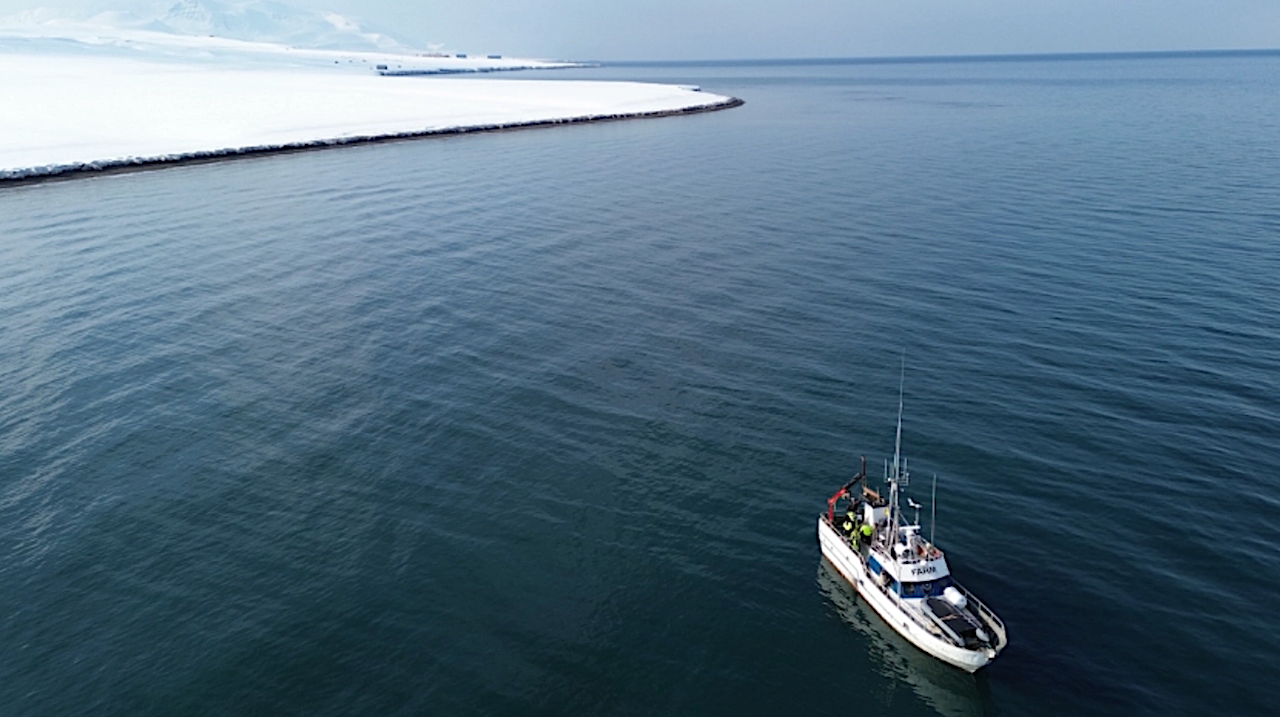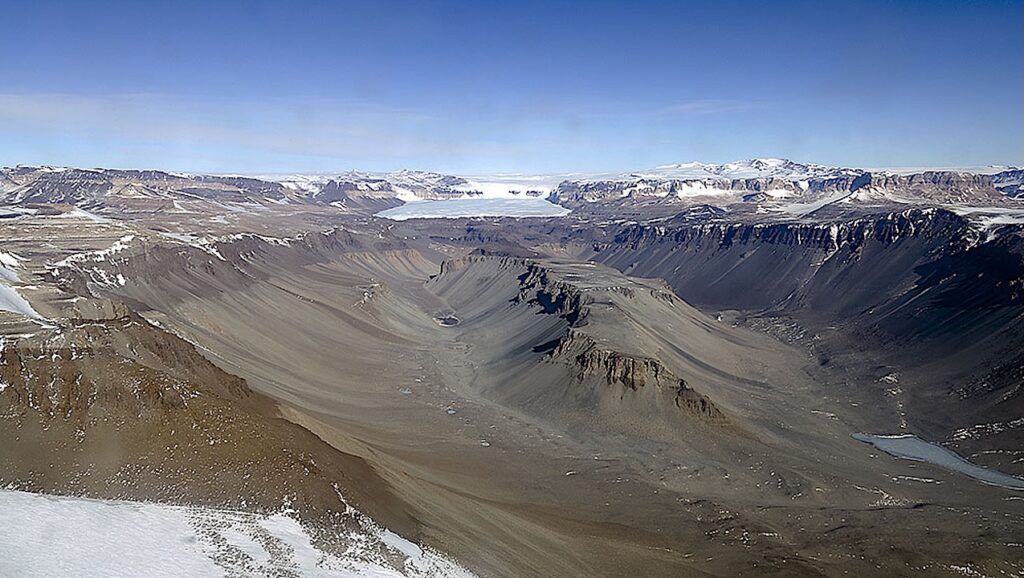Iceworld Ecology: Bacteria In Earth’s Arctic Seabed Are Active All Year Round

The Arctic is cold and hostile to life, yet it is home to a large number of microorganisms whose activity has a significant impact on life on our planet.
For example, bacteria in the seabed play a central role in processing the biomass of dead organisms, thereby transforming the contained carbon into hard-to-degrade substances that can remain stored for a long time.
In addition to the cold, the unusual seasonality is a striking feature of polar habitats – day and night do not alternate every twelve hours, but rather the entire year fluctuates between midnight sun and polar night. This has a massive impact on local primary production, which is dependent on sunlight. In summer, tiny algae thrive in the seawater and also life on land flourishes. In winter, primary production largely comes to a standstill. Little research has been carried out into the extent to which the resulting strong fluctuations in the input of organic matter influence the bacteria in the seabed.
Addressing this knowledge gap, a team of researchers from the Max Planck Institute for Marine Microbiology in Bremen, Germany, visited the Svalbard archipelago at different times of the year to investigate the local bacterial sediment community. They now present their findings in The ISME Journal.
Enzymes change more than bacteria
Surprisingly, the bacterial community in the seabed does not behave as expected considering the environmental conditions. “Although the input of organic material and its turnover rates fluctuate greatly over the course of the year, the composition of the bacterial community hardly changes at first glance,” reports principal investigator Katrin Knittel. Bacteria in the seabed thus behave very differently to those in the water, where many of them exhibit a pronounced seasonality. “Benthic bacterial communities – i.e., those in the seabed – are very complex,” Knittel adds. “That’s what makes them so stable and robust, and it makes it very challenging for us to investigate their dynamics.”
In order to better understand this unexpected behaviour, Knittel and her team from the Max Planck Institute in Bremen have now investigated the so-called functional diversity of the bacteria. How much does the activity of the bacteria in the sea floor change between midnight sun and polar night? To find out, they analysed which genes the bacteria possess to break down algal sugars and to what extent they use them.
“While the composition of the bacterial community hardly differs between the seasons, we found that the gene expression of carbohydrate-degrading enzymes changes between winter and spring,” explains first author Sebastian Miksch, who participated in the project as part of his doctoral thesis. In winter, enzymes that break down a-glucans (e.g. glycogen) predominate. The a-glucans are intracellular storage compounds of heterotrophic bacteria, animals and fungi. They are also available throughout the rest of the year, but are then less important.

The specially developed Ellrott grab is small and light and can also be easily handled on board small ships, such as the MS Farm. Chyrene Moncada retrieves the device (left and upper right, (© F. Aspetsberger/Max Planck Institute for Marine Microbiology), developer and name-giver Andreas Ellrott with his instrument (lower right, (© K. Knittel/Max Planck Institute for Marine Microbiology). CREDIT © Max Planck Institute for Marine Microbiology
In spring, however, there are more enzymes that break down b-glucans such as the algal component laminarin. Then there are so many b-glucans that some of them may be set aside as a storage for later in the year. “These enzymes reflect which algal components – especially algal sugars – are available to the bacteria in the different seasons,” explains Knittel. “It’s not so different to going to the farmers market here: While there are lots of different fresh fruit and vegetables available during the sunny season, at some point during the winter all that’s left are the stored potatoes.”
The bacteria in the seabed can hence utilise fresh material that sinks from the water column, particularly in spring and summer, such as the aforementioned laminarin. However, they can also consume material that is already present in the seabed or is produced there. This includes tasty treats such as mucin, but also tough chunks such as chitin. On these, the bacteria nibble all year round. This food source is particularly important in winter, when other input is scarce. Their long-term availability Their long-term availability stabilises the bacterial community in the seabed.
“These findings occur on very small scales, but they are important in a larger context: When the bacteria consume the algal sugars, they release carbon dioxide. And carbon dioxide is a very important greenhouse gas,” Knittel notes. Thus, the tiny ocean inhabitants can have an influence on global processes.
Small, lightweight, practical: the Ellrott grab
Overall, the bacterial community in the Arctic seabed is therefore surprisingly uniform throughout the seasons. Despite the strong seasonality, the community is present and active in both seasons. However, it was not only the internal dynamics that made it difficult for Knittel’s team to study the bacteria in Spitsbergen’s seabed. It is also methodologically challenging. “It is very difficult to obtain undisturbed samples of the seabed and the pore water contained between the sand grains,” explains doctoral student Chyrene Moncada, who is also working on the project. “That’s why we developed our own device: the Ellrott grab.”
This sampling device, presented in a publication in the journal Limnology and Oceanography: Methods and named after its developer and co-author Andreas Ellrott, makes it possible to take sediment samples from sandy sediments without disturbing them. The grab is moreover so small and lightweight that it is perfect for use on small research vessels. “Andreas is a brilliant engineer and designed and built the grab from scratch, manufacturing many of the components himself in a 3D printer,” says Moncada. “To date, we have already collected over 100 sediment samples from the Wadden Sea and the fjords of Svalbard with the Ellrott grab – and we plan to collect many more!”
Astrobiology,








